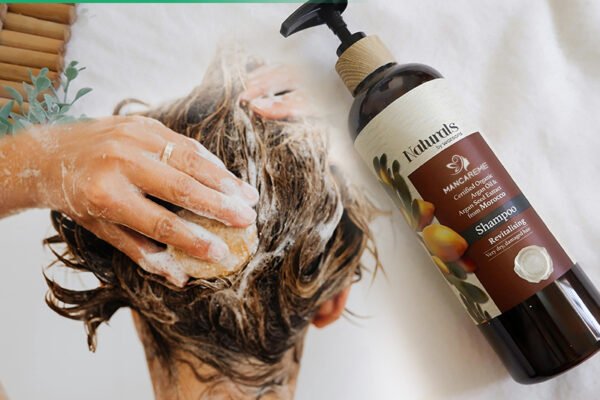Ⅰ. Introduction
According to the latest global skincare market research, 72% of consumers will prioritize checking the ingredient list over brand awareness when purchasing body care products. This trend reveals that in today’s competitive market, the formulation design of body lotions will become a major factor that influences consumer purchases. As consumers’ attention to natural, additive-free skincare ingredients continues to increase, the formula of private label body lotions must not only have excellent performance in terms of effect, but also ensure product safety and meet consumer demand for ingredients. So what ingredients should private label body lotions choose to stand out in the market?
This article will deeply analyze the role of a variety of key ingredients, from powerful moisturizers to antioxidants and gentle plant extracts, aiming to explore the best ingredients for body lotions to help you improve product performance.

Ⅱ. Body Lotion Market Trends
In recent years, as consumers’ requirements for the quality of skin care products continue to improve, private label body lotion has gradually emerged in the market and become an emerging force that cannot be ignored. Many private labels have quickly gained a foothold in the market segment with their flexible formula customization capabilities and cost control advantages. They have successfully created a series of products that not only meet the pursuit of a healthy lifestyle but also have excellent skin care effects by carefully selecting natural and organic ingredients and combining scientific and rigorous proportions, thus standing out in the fiercely competitive market.
Market research data shows that with the increasing popularity of environmental awareness and health concepts, consumers’ demand for body lotions containing natural plant extracts, effective moisturizers and antioxidants has shown a continuous growth trend. In recent years, the proportion of consumers who buy additive-free and low-irritation products has steadily increased. This trend not only provides a broad market space and development opportunities for private labels, but also encourages companies to continuously increase R&D investment and promote continuous innovation in product formulas.
For example, a well-known private label has successfully won the favor and praise of a large number of consumers with sensitive skin by launching a “fragrance-free, low-sensitivity” body lotion product, further verifying the importance and effectiveness of the market strategy of accurately selecting product ingredients based on consumer demand.
Ⅲ. The Important Role of Body Lotion Ingredients
In the formula of body lotion, each ingredient is not simply mixed, but each performs its own duties, assuming the important tasks of moisturizing, repairing, and anti-oxidation. For example, glycerin, as a moisturizer, absorbs moisture and locks in water to keep the skin moisturized; antioxidants such as vitamin E can neutralize free radicals and resist environmental pollution damage. With a reasonable combination of these ingredients, the product can achieve multiple skin care effects and meet consumers’ demand for efficient and safe skin care products.
At the same time, there is often a synergistic effect between ingredients, which jointly promotes product performance. For example, hyaluronic acid and glycerin work together to form a moisturizing barrier and reduce water loss; with vitamin C, it not only promotes collagen synthesis, but also brightens the skin and makes the skin glow with a healthy luster. Such a ratio not only improves the efficacy of the body lotion, but also meets consumers’ expectations for multiple skin care effects.

Ⅳ. Detailed Explanation of Key Ingredients
In lotion formulations, various ingredients play different and complementary roles, which together determine the overall skin care effect of the product. Below you can learn more about several key ingredients and their working mechanisms.
1. Moisturizer
As the cornerstone ingredient in body lotion, moisturizer plays an indispensable role. Its core function is to absorb and lock in moisture to ensure that the skin is permanently hydrated. For example, hyaluronic acid, a star ingredient, can build a protective film on the surface of the skin, effectively absorb and seal moisture, so that the skin can remain moist and comfortable for a long time even in dry seasons. It is especially suitable for relieving the tightness of the skin caused by a dry environment.
Glycerin, as another classic moisturizing ingredient, not only has excellent water absorption performance, but also can cleverly balance the water-oil ratio of the skin, significantly improving the softness and smoothness of the skin. In actual formulas, glycerin is often intelligently combined with other moisturizing ingredients to achieve a more lasting and significant moisturizing effect, allowing the skin to be immersed in a continuous stream of moisture and nourishment.
2. Oxidants
Nutrients and antioxidants not only provide the nutrients the skin needs, but also effectively protect against environmental pollution and free radical damage.
For example, vitamin E, as a powerful antioxidant, can neutralize free radicals, prevent premature aging of the skin due to oxidative stress, and help repair cells damaged by UV exposure.
Vitamin C not only has antioxidant properties, but also promotes collagen production, thereby improving skin elasticity and firmness. Many high-end body lotions add vitamin C to their formulas to achieve the dual effects of whitening and anti-aging.
3. Plant Extracts
Natural plant extracts play a soothing, repairing and anti-inflammatory role in body lotions with their gentle and effective properties.
For example, aloe vera extract is known for its calming and repairing functions. It can relieve redness and skin inflammation caused by environmental irritation and is very suitable for sensitive skin.
Green tea extract is rich in polyphenol compounds and has good antioxidant and anti-inflammatory properties. It can effectively reduce skin damage caused by stress and pollution and help restore skin health.
4. Skin Barrier Repair Factor
Skin barrier repair factor is mainly used to strengthen and repair the skin’s own barrier function, helping the skin resist external damage.
For example, peptide ingredients perform well in promoting collagen production, stimulating skin cell regeneration, significantly improving skin sagging and fine lines, thereby improving overall skin firmness.
Ⅴ. How to Choose the Right Body Lotion Ingredients?
Different skin types have different requirements for body lotion ingredients. For users with dry skin, high-concentration moisturizing ingredients such as hyaluronic acid and glycerin are particularly important because they can deeply lock in moisture and relieve dry skin. You can also add higher concentrations of natural plant oils, such as jojoba oil, which can form a long-lasting moisture-locking film on the skin surface and significantly improve dry skin problems.
Sensitive skin pays more attention to mild and non-irritating ingredients, and often chooses fragrance-free and low-irritation formulas, such as adding aloe vera extract and glycyrrhizic acid, which can effectively soothe the skin, reduce redness and irritation, and avoid the use of fragrances and pigments that are prone to allergies, thereby providing a safer skin care experience.
Understanding the specific needs of consumers and matching the corresponding ingredients can not only improve the actual efficacy of the product, but also effectively enhance consumers’ trust in the brand.
VI . Conclusion
Based on the above discussion, scientific and reasonable ingredient selection plays a pivotal role in the development of private label body lotion. From moisturizing, repairing to anti-oxidation, each ingredient has its unique role and applicable scenarios. Only by truly understanding the needs of consumers and conducting targeted research and development according to different skin types can we stand out in the fierce market competition. Through continuous innovation and improvement, brands can continuously improve product quality and meet consumers’ ever-increasing skin care requirements.



-600x400-c.jpg)



